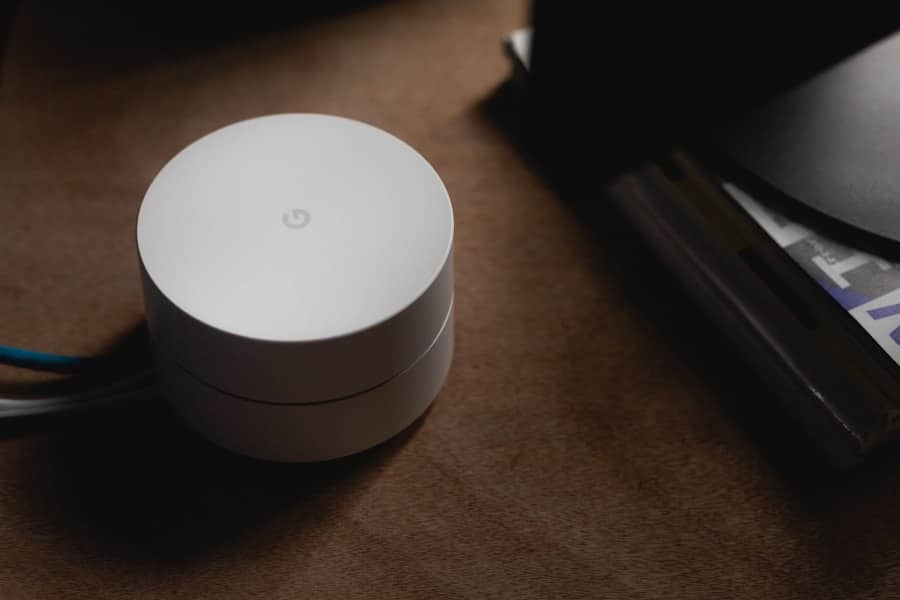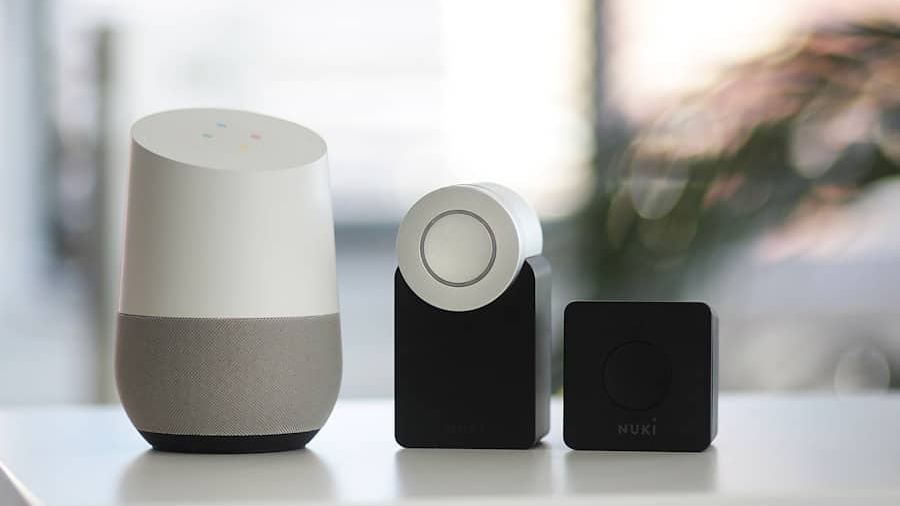In the rapidly evolving landscape of home automation, smart home hubs have emerged as pivotal components that facilitate the seamless integration of various smart devices.
The concept of a smart home hub is rooted in the desire for convenience, efficiency, and enhanced control over one’s living environment.
By consolidating the management of devices such as smart lights, thermostats, security cameras, and voice assistants, these hubs simplify the user experience and enhance the functionality of smart homes. The rise of smart home technology has been fueled by advancements in wireless communication protocols, such as Zigbee, Z-Wave, and Wi-Fi. These protocols enable devices from different manufacturers to communicate with one another, creating a cohesive ecosystem.
As consumers increasingly seek to automate their homes for energy efficiency, security, and comfort, the role of smart home hubs becomes even more critical. They not only provide a user-friendly interface for controlling devices but also enable complex automation scenarios that can significantly enhance the quality of life for users.
Key Takeaways
- Smart home hubs are central devices that connect and control various smart home devices and appliances.
- When comparing smart home hubs, consider factors such as compatibility, ease of set-up, user interface, automation features, and security.
- Some smart home hubs offer easy set-up and installation, while others may require more technical knowledge.
- Compatibility with a wide range of smart home devices is crucial for a seamless and integrated smart home experience.
- User interface and control options, as well as automation and customization features, play a significant role in the overall user experience with smart home hubs.
Comparison of Smart Home Hubs
When evaluating smart home hubs, several key players dominate the market, each offering unique features and capabilities. Notable examples include Amazon Echo Plus, Google Nest Hub, Samsung SmartThings Hub, and Apple HomePod. The Amazon Echo Plus stands out with its built-in Zigbee hub, allowing it to connect directly to compatible devices without requiring additional hardware.
This feature simplifies the setup process for users who want to integrate various smart devices into their homes.
On the other hand, Google Nest Hub emphasizes a visually driven user experience with its touchscreen interface.
This hub not only controls smart devices but also serves as a digital photo frame and a display for recipes or video content. Its integration with Google Assistant allows for voice commands and smart displays that enhance interactivity. Samsung SmartThings Hub is another contender that supports a broad spectrum of devices across different protocols, making it an excellent choice for users with diverse smart home setups.
Meanwhile, Apple HomePod focuses on privacy and security, leveraging Apple’s ecosystem to provide a secure environment for managing smart devices.
Ease of Set-Up and Installation

The ease of set-up and installation is a crucial factor when choosing a smart home hub. Many consumers are looking for solutions that require minimal technical expertise and can be operational within minutes. The Amazon Echo Plus exemplifies this ease of use; users can simply plug it in, connect it to their Wi-Fi network through the Alexa app, and begin adding compatible devices.
The intuitive interface guides users through the process of linking devices, making it accessible even for those who may not be tech-savvy. In contrast, some hubs may require more intricate installation processes. For instance, the Samsung SmartThings Hub necessitates a bit more configuration due to its compatibility with multiple protocols.
While this flexibility is advantageous for advanced users seeking to create a customized smart home environment, it may pose challenges for beginners. Users must navigate through various settings and ensure that their devices are compatible with the hub’s supported protocols. Therefore, while advanced features can enhance functionality, they can also complicate the initial setup experience.
Compatibility with Smart Home Devices
Compatibility is a critical consideration when selecting a smart home hub, as it determines which devices can be integrated into the system. The Amazon Echo Plus excels in this area due to its support for Zigbee devices alongside Wi-Fi-enabled products. This dual compatibility allows users to connect a wide range of devices from different manufacturers without being restricted to a single ecosystem.
For example, users can easily integrate Philips Hue lights with their Echo Plus while also controlling Wi-Fi-enabled cameras from other brands. Conversely, some hubs may have limitations regarding device compatibility. The Apple HomePod primarily supports devices that are HomeKit-enabled, which can restrict users who wish to incorporate products from manufacturers that do not participate in Apple’s ecosystem.
While HomeKit offers robust security features and a streamlined user experience for Apple device owners, it may not provide the same level of flexibility as other hubs like SmartThings or Echo Plus. Therefore, potential buyers should carefully assess their existing devices and future plans for expansion when choosing a hub to ensure compatibility.
User Interface and Control Options
The user interface of a smart home hub plays a significant role in shaping the overall user experience. A well-designed interface can make controlling multiple devices intuitive and straightforward. The Google Nest Hub features a vibrant touchscreen display that allows users to interact visually with their smart home environment.
Users can swipe through various controls, view camera feeds, or access information such as weather updates or calendar events at a glance. This visual approach enhances usability and makes it easier for families to engage with their smart home technology. In contrast, voice control remains a dominant feature across many smart home hubs.
The Amazon Echo Plus leverages Alexa’s voice recognition capabilities to allow users to issue commands hands-free. This is particularly beneficial in scenarios where users may be occupied with other tasks or when they want to control devices from different rooms without needing to physically interact with the hub. However, while voice control offers convenience, it may not always provide the same level of precision as a touchscreen interface when managing multiple devices or complex automation routines.
Automation and Customization Features

Automation is one of the most compelling aspects of smart home technology, enabling users to create personalized routines that enhance convenience and efficiency. Many smart home hubs offer robust automation features that allow users to set schedules or trigger actions based on specific conditions. For instance, with the Samsung SmartThings Hub, users can create complex automation scenarios that involve multiple devices working in concert.
A user might set up a routine where their lights dim automatically when they start watching a movie or have their thermostat adjust based on their location. Customization options vary significantly between different hubs. The Amazon Echo Plus allows users to create routines through the Alexa app, enabling them to combine multiple actions into a single command.
For example, saying “Goodnight” could turn off all lights, lock doors, and adjust the thermostat simultaneously. However, some users may find limitations in how deeply they can customize these routines compared to more advanced platforms like SmartThings or Home Assistant, which offer extensive scripting capabilities for tech-savvy individuals looking to fine-tune their automation setups.
Security and Privacy Considerations
As smart home technology becomes increasingly integrated into daily life, security and privacy considerations have taken center stage. Smart home hubs often serve as gateways to sensitive data and personal information; therefore, ensuring robust security measures is paramount. The Apple HomePod is particularly noteworthy in this regard; Apple has built its reputation on privacy and security features that protect user data from unauthorized access.
HomeKit-enabled devices are encrypted end-to-end, providing an added layer of security that appeals to privacy-conscious consumers. In contrast, other hubs may face scrutiny regarding data handling practices. The Amazon Echo Plus collects user data to improve its services and personalize experiences; however, this has raised concerns about how that data is stored and used.
Users must navigate privacy settings carefully to ensure they are comfortable with how their information is managed. Additionally, vulnerabilities in connected devices can pose risks if not adequately addressed by manufacturers. Therefore, consumers should prioritize hubs that offer transparent privacy policies and robust security features when making their selections.
Conclusion and Recommendations
In navigating the world of smart home hubs, consumers are presented with an array of options tailored to different needs and preferences. Each hub brings its unique strengths and weaknesses to the table; therefore, understanding these nuances is essential for making an informed decision. For those seeking an easy-to-use solution with extensive compatibility across various devices, the Amazon Echo Plus stands out as an excellent choice due to its built-in Zigbee support and robust Alexa ecosystem.
Conversely, tech enthusiasts who desire deep customization and automation capabilities may find Samsung SmartThings Hub more appealing due to its flexibility in integrating diverse devices across multiple protocols. For individuals who prioritize privacy and security above all else, Apple HomePod offers a compelling option within the Apple ecosystem but may limit compatibility with non-HomeKit devices. Ultimately, the best choice will depend on individual preferences regarding ease of use, device compatibility, user interface design, automation capabilities, and security considerations.
By carefully evaluating these factors against personal needs and existing technology investments, consumers can select a smart home hub that enhances their living environment while providing peace of mind regarding security and privacy.
If you’re interested in finding the best screen recording software to enhance your smart home device experience, check out The Ultimate Guide to the Best Screen Recording Software in 2023. This article provides a comprehensive overview of the top options available on the market. Additionally, if you’re looking to expand your smartwatch capabilities, be sure to read The Best Smartwatch Apps of 2023 for some great recommendations. And if you’re in the market for a new laptop to control your smart home devices, consider checking out

